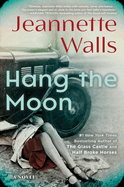
| Publisher: | Scribner | |
| Genre: | Sagas, Family Life, General, Literary, Biographical, Fiction, Historical | |
| ISBN: | 9781501117299 | |
| Pub Date: | March 2023 | |
| Price: | $28 |
| Fiction |
by Jeannette Walls
Motherless Sallie Kincaid, cast out of the family's Big House at eight years old, hopes to regain her Daddy's affection but never imagined she'd be queen of anything in Duke Kincaid's Claiborne County. In the fast-paced historical novel Hang the Moon by Jeannette Walls (The Glass Castle; The Silver Star), Sallie confronts the odds, fighting to earn the respect of a corner of Virginia defined by Kincaid power.
After nine years, Duke fetches Sallie from her hardscrabble life with her maiden aunt. It's 1918, and the wife who'd shunned Sallie has died of influenza. Sallie, feisty and wise at 17, is a young woman from the hollows in a "white-gloved" world. Duke respects that she will get her "hands dirty working" and brings her into his business at the Emporium, but after his sudden death she's marginalized in the messy hierarchies of the Kincaid family. Then, it's Prohibition, and the county's economy relies on moonshine whiskey. Sallie embraces the Duke's philosophy that "legal and illegal and right and wrong don't always line up."
Finally claiming her Daddy's big swivel chair in the Emporium, she tells beleaguered citizens: "I am on your side. I will fight for you. You can trust me." Sallie acts on behalf of the "stillers," challenging violent Prohibition deputies and earning her the title "Queen of the Kincaid Rumrunners." Now a fierce businesswoman in a lawless world, she is also pained to learn shocking secrets about her Kincaid heritage. Rich Southern dialect, colorful supporting characters and historic period details enhance this rousing novel of a sympathetic woman, a Kincaid "queen" boldly continuing the legacy of the Duke. --Cheryl McKeon, Book House of Stuyvesant Plaza, Albany, N.Y.
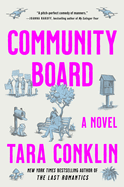
| Publisher: | Mariner | |
| Genre: | Women, Family Life, Small Town & Rural, General, Literary, Fiction | |
| ISBN: | 9780062959379 | |
| Pub Date: | March 2023 | |
| Price: | $30 |
| Fiction |
by Tara Conklin
A world crumbles, and practically everything that can go wrong does so in Community Board, a bittersweet, laugh-out-loud novel by Tara Conklin, whose cleverness will warm the hearts of readers.
When 29-year-old Darcy Clipper's husband announces that he's leaving her for his skydiving instructor, Darcy is left stunned, bereft and aimless. She is granted a sabbatical from her job as an actuary near Boston and heads to her old hometown of Murbridge, Mass. However, when she arrives at her parents' house, she discovers that carefree Mom and Dad have set off to Arizona--on a trial run at a retirement community--without even telling her.
Left to her own devices, Darcy hunkers down, nursing her wounds and perusing anonymous posts on a virtual community bulletin board. When a good-natured, nosy neighbor starts leaving cookies for Darcy in Tupperware containers she wants back and then a potbellied pig, a pet gone AWOL, shows up in Darcy's backyard, she starts to emerge from her self-imposed isolation.
Conklin (The House Girl; The Last Romantics) has shown tremendous range in the empathies of her fiction. Community Board is a crafty send-up about one woman struggling to come to terms with--and rebuild--her battered self-esteem over four seasons in the changing landscape of a small town. Darcy may seem a poor soul, but her sharp, bright, enlightened mind--and her snarky, lovably endearing narrative voice, supplemented with zany e-mails and community posts--will easily win the affection of readers rooting wholeheartedly for her reinvention. --Kathleen Gerard, blogger at Reading Between the Lines
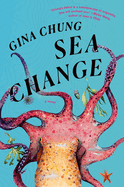
| Publisher: | Vintage | |
| Genre: | Literary, Coming of Age, Asian American, Fiction | |
| ISBN: | 9780593469347 | |
| Pub Date: | March 2023 | |
| Price: | $17 |
| Fiction |
by Gina Chung
In Korean American writer Gina Chung's charmingly offbeat debut, Sea Change, a young woman who works at an aquarium realizes she needs a life bigger than her usual self-sabotage and wallowing in loss.
In this near-future novel, environmental degradation is even more advanced and there are plans afoot to colonize Mars. Aurora--her Korean name is Bae Arim, but she goes by Ro--has followed in her father's footsteps by working at the aquarium in Fountain Plaza, a New Jersey mall. Fifteen years ago, Ro's father, Apa, set off on a research expedition to the polluted Bering Vortex--where he'd previously discovered Dolores, the aquarium's prized giant Pacific octopus. His craft disappeared and Apa is presumed dead, though Ro holds out hope that he'll return. Her ex-boyfriend, Tae, is nearly as inaccessible, having volunteered for the Arc 4 mission to Mars. At age 30, Ro is isolated--partially by chance, but also by choice. Her belief that everyone she loves leaves her has driven her to withdraw from those still in her life.
It's clear something's got to give here. When she learns Dolores is to be sold to a private collector, Ro must rethink everything. Dolores--an intelligent and playful creature who changes color to reflect her mood, and appears to recognize individual humans--is a constant source of amusement and wonder. The self-hating young woman is a familiar figure in recent fiction, but the specifics of Ro's situation and her friendship with Dolores, along with the speculative elements, make Sea Change stand out. --Rebecca Foster, freelance reviewer, proofreader and blogger at Bookish Beck
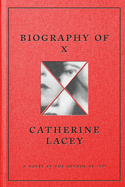
| Publisher: | Farrar, Straus and Giroux | |
| Genre: | World Literature, American - 21st Century, Literary, Fiction | |
| ISBN: | 9780374606176 | |
| Pub Date: | March 2023 | |
| Price: | $28 |
| Fiction |
by Catherine Lacey
Few mysteries are as compelling as the life of a renegade artist prone to evasion, as Catherine Lacey (The Answers) thrillingly demonstrates in Biography of X. The conceit of this clever novel is that it's a 2005 biography that former crime reporter C.M. Lucca writes about X, her wife, who died in 1996. X was a visual artist, a record producer, a songwriter who worked with David Bowie and a novelist who adopted various pseudonyms. Lacey invents an alternative 20th century where, since 1945, the country has been divided into regions in conflict--mainly the Southern Territory, with its decades of "fascist theocracy," and the Northern Territory, where Emma Goldman, Franklin D. Roosevelt's chief of staff, led the fight for same-sex marriage. This dissension included violent acts, as when anarchists blew up a Southern Territory gun factory, an event in which X was involved.
When an unauthorized biography paints an inaccurate portrait of X, Lucca is determined to discover the truth. Most of the novel consists of interviews Lucca conducts with people who knew X, through which she uncovers facts that challenge the relationship she thought she and X shared. The technique of building a character through interviews has been done before, including in Citizen Kane and Heinrich Böll's Group Portrait with Lady, but Lacey has contributed a work of great originality, complete with footnotes, mock photos and more. The book is immense fun, and a commentary on the unreliability of biography, the nature of love and the perils of digging too deeply into a person's life. --Michael Magras, freelance book reviewer

| Publisher: | West Margin Press | |
| Genre: | War & Military, Animals, Nature & the Environment, Small Town & Rural, Disabilities, Literary, Fiction | |
| ISBN: | 9781513139111 | |
| Pub Date: | March 2023 | |
| Price: | $28.99 |
| Fiction |
by Kim Heacox
Three dissimilar narrators share a passion to protect what they most love, including their home on a remote coast of Alaska threatened by climate change and development, in On Heaven's Hill by Kim Heacox (John Muir and the Ice That Started a Fire; Jimmy Bluefeather), a fast-paced novel of resistance.
Their stories unfold in alternating chapters, intertwining as they face their common conflict. Salt d'Alene struggles to support his family in the town of Strawberry Flats. Nearby, Willynillyville--the "commune... paradise, holdout, and fort" of veterans of four wars--welcomes narrator Kestrel Nash, age 11, and her family, everyone hoping Alaska's peace will help heal the PTSD her Papa suffers after serving in Afghanistan. "Family is everything," the third narrator thinks. Silver, a young wolf, hunts to feed his pack. Meanwhile, the governor plans a "Roads to Resources" project--roads, a bridge and methane drilling--that threatens their home. Confirming the presence of an endangered species, including wolves, would "paralyze the governor's program."
Multiple subplots increase the tension. Secretly, Salt grapples with an offer of generous compensation to illegally trap wolves. Idealistic Kestrel leads an Arthurian might-for-right protest movement, defying her pro-development principal. Silver's pack flees "tall uprights" with drones and helicopters "shredding the sky." Protestors refer to Edward Abbey and Henry David Thoreau; both factions repeatedly quote the Bible. Amid the turmoil, love among family and friends prevails, balancing the threat of environmental disaster with the grace of kindness. A veteran cites Nelson Mandela: "It always seems impossible... until it's done." Kestrel, prophetically, thinks: "Save the wolves and we just might save ourselves." --Cheryl McKeon, Book House of Stuyvesant Plaza, Albany, N.Y.

| Publisher: | Doubleday | |
| Genre: | Feminist, Humorous, General, Literary, Fiction | |
| ISBN: | 9780385549677 | |
| Pub Date: | March 2023 | |
| Price: | $28 |
| Fiction |
by Julia Langbein
A young teacher leaves the classroom for the lure of Hollywood in hopes of turning her novel into a film in American Mermaid, former comedian Julia Langbein's ambitious, satirical debut novel. Penelope is a high school English teacher. Her own debut novel, American Mermaid, which is about a woman who must use a wheelchair on land and transforms into a mermaid in water, becomes a runaway bestseller. Penelope learns she has a genetic mutation that presages breast cancer but an elective double mastectomy is out of reach on her salary. She loves teaching, but suddenly her best option is "to leave teaching, go to Hollywood, assume my place among the other educated 'creatives,' and make bank." Selling a screenplay sounds like easy money, but the experienced screenwriters her agent pairs her with pitch script ideas like "What if she just KNOWS science?" and insist on completely revamping and even killing off her beloved main character, the titular mermaid. Penny struggles between staying true to her artistic voice and selling out for success as a series of strange occurrences--a shattered aquarium, phantom calls--make her wonder if her mermaid is a figment of her imagination at all.
Langbein toggles between Penny's witty first-person narrative and excerpts from the fictional American Mermaid, embedding a screwball sci-fi thriller within a touchingly earnest satire of a society in which a respectable profession can't ensure health care. Come for the laugh-out-loud one-liners, Hollywood glitz and feminist angst, and stay for the creative take on mermaid mythology, family dynamics and metafiction. --Jaclyn Fulwood, blogger at Infinite Reads
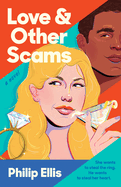
| Publisher: | Putnam | |
| Genre: | Women, Romantic Comedy, Humorous, Romance, Contemporary, General, Fiction | |
| ISBN: | 9780593542477 | |
| Pub Date: | March 2023 | |
| Price: | $17 |
| Fiction |
by Philip Ellis
Philip Ellis masters deeply complex characters with a dangerous side in Love & Other Scams, his first novel. Cat Bellamy is a freelance graphic designer, which means she is creative and, most of the time, strapped for cash. Her predicament turns dire. However, in her times of need, Cat, a seasoned pickpocket, knows where to go: the Oceanic Bar, where she usually leaves with more money than she came with. She thinks: "There is no feeling in the world quite like that of breaking the rules, of doing the exact opposite of what a grown woman is supposed to do... and getting away with it." When Cat realizes Jake Marlowe, the handsome bartender, has caught on to her tricks, she thinks she's busted--until she sees his own tricks at play and realizes they are cut from the same cloth.
Cat, invited to be in her university friend Louisa's whirlwind wedding, spots her multimillion-dollar engagement ring and decides it's her next target. She needs Jake to complete the mission. They decide to fake-date through wedding events, ensuring their joint attendance at the wedding where they'll make their move. The dynamic pair, who prove to be the flawless match, put their brilliant minds to work to create the perfect heist. But their chemistry and true feelings rise to the surface; despite Cat determining to keep her eye on the prize, these feelings blur the lines between their fake relationship and a very real budding romance. Cat's sharp and witty personality, Jake's mysterious and confident demeanor and their clever banter work together to deliver a dynamic and hilarious rom-com. --Clara Newton, freelance reviewer
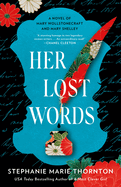
| Publisher: | Berkley | |
| Genre: | Women, General, Biographical, Fiction, Historical | |
| ISBN: | 9780593198421 | |
| Pub Date: | March 2023 | |
| Price: | $17 |
| Fiction |
by Stephanie Marie Thornton
Both Mary Wollstonecraft and her daughter Mary Shelley (who never knew her mother) longed to take the world by storm. Stephanie Marie Thornton delves into the literary, emotional and financial struggles of both women in her eighth novel, Her Lost Words, charting their journeys with compassion and insight.
Thornton (A Most Clever Girl) begins her narrative in 1775 with Mary Wollstonecraft, who escapes her miserable childhood and flees to London with a head full of feminist ideas and dreams of becoming a published author. Eventually, she travels to post-revolutionary Paris, where she falls in love with a blockade-running American, Gilbert Imlay, and bears his child. When it becomes dangerous for British citizens to remain in Paris, Wollstonecraft and her daughter return to London, only to find Imlay uninterested in marriage, and increasingly dismissive of Wollstonecraft. To her surprise, Wollstonecraft ends up building a life with philosopher William Godwin, who supports both her domestic and literary endeavors.
Thornton intersperses this narrative with the life story of Wollstonecraft's second daughter, Mary Shelley (born Mary Godwin), who has grown up in the shadow of her mother's fame, but longs to know what kind of person she truly was. Frustrated by life with her father and stepmother, though fond of her sisters, Fanny and Claire, Mary welcomes the passionate eruption of poet Percy Shelley into her life.
Drawing extensively on the known historical facts about each woman (and their spouses, lovers and children), Thornton creates two protagonists whose brains and emotions blaze brilliantly on the page. --Katie Noah Gibson, blogger at Cakes, Tea and Dreams
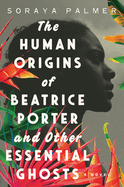
| Publisher: | Catapult | |
| Genre: | Women, Occult & Supernatural, Family Life, African American & Black, Fiction, Siblings | |
| ISBN: | 9781646220953 | |
| Pub Date: | March 2023 | |
| Price: | $27 |
| Fiction |
by Soraya Palmer
The Human Origins of Beatrice Porter and Other Essential Ghosts is Soraya Palmer's first novel, a phantasmagoric interweaving of family and folktale. Readers first meet two sisters, Sasha and Zora, when they are young girls in Brooklyn's Flatbush, dealing with the household complexities of their father Nigel's violence and infidelity and their mother Beatrice's headaches and distance. Soon this timeline meanders to visit Nigel and Beatrice as children in Jamaica and Trinidad, respectively, and then as a young couple. These individual and family histories blend with folktales of Anansi (spider, god, man, woman, trickster storyteller), demons and exorcisms. The narrator of these time-jumping tales, with the repeating refrain "Let me tell you a story," is mysterious, driven by motivations not always clear nor necessarily reliable--but always concerned with the power of storytelling itself.
In the 1990s and 2000s, Sasha discovers chest binding as she navigates gender and sexuality. Zora studies her book of Anansi stories and hones her craft in her diary. As much as the sisters love each other, their respective self-explorations push them apart. In different ways, Nigel and Beatrice separate but remain intertwined. Caribbean and West African folktales continue to influence each of these threads until they come together again in Trinidad with a 106-year-old grandmother, several reunions, an ending and a new beginning.
Palmer imbues her novel with both snappy pacing and deep feeling in a lovely prose voice with music and poetry behind it. The Human Origins of Beatrice Porter has big things to say about sisterhood and family; race, sexuality and class; life and death; and above all, the power of storytelling. --Julia Kastner, librarian and blogger at pagesofjulia
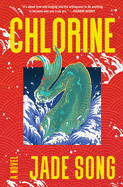
| Publisher: | Morrow | |
| Genre: | Bisexual, Occult & Supernatural, Horror, Fairy Tales, Folk Tales, Legends & Mythology, Fantasy, General, Coming of Age, Literary, Asian American, Dragons & Mythical Creatures, Fiction, LGBTQ+ | |
| ISBN: | 9780063257603 | |
| Pub Date: | March 2023 | |
| Price: | $30 |
| Fiction |
by Jade Song
A visceral and startling debut novel by Jade Song, Chlorine is a portrait of ambition, defiance and longing set in the world of competitive swimming. Ren Yu has always been drawn to the water. Her focus becomes single-minded when she gets sucked into the churning orbit of an intense and abusive swim coach. The book opens as teenage Ren organizes her life around swim practices, grueling workouts, punishing diets and the routine of shaving her body free of hair to slip through the water seamlessly. As her body transforms, her best friend and fellow swimmer Cathy is inescapably drawn to Ren, although she cannot predict the lengths Ren will go to in order to re-create herself as the water-bound creature she knows herself to be.
Chlorine is situated fully in Ren's mind, catapulting readers into her spiral of obsession, aesthetic discipline and burning desire from page one. This world is consistently wince-worthy, one built more of pain than pleasure. Yet, in the same way that Cathy finds herself captivated by Ren's intensity, readers become immersed in her undeniable voice.
While the explosive conclusion of Ren's story may at first seem particularly cringeworthy, it's ultimately an unexpectedly peaceful finale, one that seeks finally to find pleasure in the water, instead of pain. After all, it is not the pursuit of water that contorts Ren's mind and body, but the question of whether "womanhood [was] always so violent, raw," marked by "gut-wrenching, gross violence." Song invites readers to enter into Ren's obsessions not with judgment or disgust, but with an understanding that is surprisingly tender in the face of the novel's abrasion. --Alice Martin, freelance writer and editor

| Publisher: | Soho Crime | |
| Genre: | War & Military, Collections & Anthologies, Mystery & Detective, 20th Century - World War II, Fiction, Historical | |
| ISBN: | 9781641294515 | |
| Pub Date: | March 2023 | |
| Price: | $26.95 |
| Starred | Mystery & Thriller |
by James R. Benn
James R. Benn (Shard; the Billy Boyle World War II Mystery series) brings readers a set of nine short mysteries, each crackling with a different kind of energy about pushing back and saying "no," in the aptly titled The Refusal Camp. In this collection, the stakes are always high and the danger intense, focusing on racism in the Deep South in one story and setting another on the ski slopes of Norway, with German soldiers in hot pursuit. All of the stories are riveting, but some resonate more. The stand-outs include "The Horse Chestnut Tree," a story about the disastrous circumstances of brothers who underestimate the intelligence of those they enslave; "Glass," a madcap time-space adventure in which hapless cousins find a piece of future technology and embark on a get-rich-quick scheme; and "Vengeance Weapon," in which a prisoner at a Nazi death camp proves, through slowly building tension, that revenge is a dish best served cold. Although Benn imbues all his characters with a bit of rakish humor, there's nary a false note to be had among the narratives and, just to keep things lively, the hero isn't always the usual suspect.
Benn lets each of his characters express their heart's worth, making their individual plights and seemingly insurmountable obstacles accessible to readers. Personalizing the various characters of The Refusal Camp seems so effortless for this author that each story deserves a bit of applause at its end. --Paul Dinh-McCrillis, freelance reviewer

| Publisher: | Minotaur | |
| Genre: | World Literature, Spain - 21st Century, Mystery & Detective, Crime, International Crime & Mystery, Thrillers, Fiction | |
| ISBN: | 9781250853677 | |
| Pub Date: | March 2023 | |
| Price: | $27.99 |
| Mystery & Thriller |
by Juan Gómez-Jurado
Being the smartest person in the room--maybe even one of the smartest in the world--doesn't shield one from grief or guilt, as Spanish author Juan Gómez-Jurado (The Traitor's Emblem) depicts in Red Queen, the first of a trilogy featuring genius Antonia Scott and detective Jon Gutiérrez. Antonia, called the Red Queen, is one of the few people with extreme analytical skills attached to an international, under-the-radar organization that targets "slippery violent" criminals, all without interference from bureaucracies, the police or publicity. Although her intelligence has saved many lives, Antonia is now a recluse, refusing any assignments and blaming herself for the shooting of her husband, Marcos, who has been in a three-year coma in a Madrid hospital where she spends each day. She reluctantly partners with disgraced police inspector Gutiérrez to investigate the murder of a teenage boy, which is linked to the kidnapping of Spanish bank executive Carla Ortiz, daughter of Spain's richest man.
Gómez-Jurado maintains high tension with solid action as Red Queen, translated from the Spanish by Nick Caistor, explores the kidnapping, the murder and the criminals responsible, while investing in character studies of Antonia and Jon. Antonia lives in a bare-bones apartment, having moved all her possessions into her husband's hospital room, cutting ties with everyone in her life except her grandmother in England, with whom she has video chats. Jon, who suffers homophobic coworkers, possesses an empathy that leads him to plant evidence on those who exploit the vulnerable. Readers of Red Queen will hotly anticipate its sequels, already published in Europe, in years to come. --Oline H. Cogdill, freelance reviewer
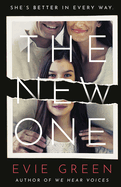
| Publisher: | Berkley | |
| Genre: | Thrillers, Fiction, Action & Adventure, Technological, Science Fiction | |
| ISBN: | 9780593439234 | |
| Pub Date: | March 2023 | |
| Price: | $17 |
| Mystery & Thriller |
by Evie Green
In The New One, Evie Green (We Hear Voices) takes readers on a propulsive journey through grief, loss and secrets kept by those we love. This compelling novel will have readers up all night, following the tribulations of a struggling family offered a great gift--or possibly a curse.
Scarlett, the Trelawneys' daughter, was a perfect angel--brilliant, beautiful, sweet, gifted--until she turns 13. She then becomes a terror: lying, staying out late at night, neglecting her schoolwork. In near-future Cornwall, Scarlett's parents, Tamsyn and Ed, are barely surviving in their humble camper. They subsist on stolen cauliflowers and rarely speak to each other (without shouting). Then tragedy strikes: Scarlett is left lying in a hospital bed in a coma, and Tamsyn fears she'll never see her daughter conscious again. Just as their insurance runs out, they receive an offer that seems a mix of magic, miracle and horror: while a company called VitaNova rebuilds their daughter, the comatose Scarlett will receive the finest medical care, and her parents will be granted a fully funded fresh start in Geneva, Switzerland. Scarlett, now named Sophie (her middle name), is part human clone and part AI. She shares Scarlett's memories and gifts, although with the traumatic past year erased, and has been augmented with a better knowledge of French and physics--and a perfect, innocent love for her parents.
The New One is deliciously disturbing, engrossing and surprising at its every turn. This not-to-be-missed novel of family dynamics and what it really means to be human and to love is both pleasurably escapist and thought-provoking. --Julia Kastner, librarian and blogger at pagesofjulia
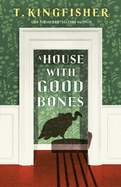
| Publisher: | Tor Nightfire | |
| Genre: | Horror, Fantasy, General, Contemporary, Suspense, Thrillers, Fiction | |
| ISBN: | 9781250829795 | |
| Pub Date: | March 2023 | |
| Price: | $26.99 |
| Starred | Science Fiction & Fantasy |
by T. Kingfisher
T. Kingfisher (Nettle & Bone; The Hollow Places; The Twisted Ones) brings her trademark brand of humor and suspense to A House with Good Bones, an intimate, skin-crawling horror story about the ties that bind--sometimes too tightly. Archeoentomologist Sam Montgomery finds herself out of a job when her latest dig turns up Native American remains, and she moves in temporarily with her mother in her North Carolina childhood home. The house is haunted with memories of Gran Mae, the abusive, controlling grandmother who used to frighten Sam with stories of "underground children." Her fantasies of quality time evaporate into concern when she sees that her mom has reset the house to look exactly as it did when Gran Mae was alive. She worries her mother is belatedly grieving Gran Mae, but other strange phenomena occur: ladybugs swarm indoors, a jar of teeth turns up under the rose garden and vultures watch the house. "As omens go," Sam observes, "it doesn't get much more obvious than that." Sam digs into their family history and learns that exorcizing a ghostly granny isn't the worst of their problems.
Kingfisher understands that the scariest horror stories have their roots firmly planted in the traumas of real life and, here, mines family dysfunction. Sam often fails to grasp the danger of her situation because she's accustomed to thinking of Gran Mae as the ultimate monster, but Kingfisher demonstrates that abusers aren't created in vacuums. Quirky side characters, Sam's drily humorous narration and a ghoulish, gruesome climax should entertain horror and fantasy fans. --Jaclyn Fulwood, blogger at Infinite Reads

| Publisher: | Berkley | |
| Genre: | Women, Romance, Workplace, Fiction | |
| ISBN: | 9780593440773 | |
| Pub Date: | March 2023 | |
| Price: | $17 |
| Romance |
by Melodie Edwards
In Jane & Edward, her first novel, Melodie Edwards delivers an endearing, irresistible version of Jane Eyre. The story begins with Jane Raine, a tenacious young woman who grew up in foster care after the death of her father. Jane works as a waitress and, after scrimping and saving to put herself through courses at a community college, is on the eve of starting her new career as a legal secretary. To her astonishment, one of Jane's teachers refers her for a job at a prestigious downtown Toronto firm, working for the intimidating Edward Rosen. Everyone else in the firm is scared of Mr. Rosen's bluster, but over the next few months Jane finds herself growing fond of Mr. Rosen--while experiencing blossoming friendships with other coworkers--until one terrible day when a secret from Mr. Rosen's past is revealed. Jane is forced to reevaluate her new life.
Jane & Edward is a reimagining, not a retelling, of Charlotte Brontë's classic Jane Eyre. It does not hew as closely to that plot as most retellings would (and, thankfully, does not dwell for any length of time, as the original does, on Jane's dire beginnings), but the broad strokes are the same. And Edwards captures Jane's delightful stubbornness extremely well. Smart and witty Jane Raine, sure to captivate readers, has a sharp mind and a gentle spirit. Jane & Edward is perfect for Brontë readers or anyone looking for a romance with depth. --Jessica Howard, freelance book reviewer

| Publisher: | Citadel Press | |
| Genre: | True Crime, Race & Ethnic Relations, United States, Con Artists, Hoaxes & Deceptions, 20th Century, History, Social Science | |
| ISBN: | 9780806542126 | |
| Pub Date: | March 2023 | |
| Price: | $28 |
| Starred | Biography & Memoir |
by Alan Prendergast
Gangbuster by journalist and author Alan Prendergast (The Poison Tree) is a stirring nonfiction account of the life of Philip Van Cise, a public servant who risked his life and status to break the mob and fight the Ku Klux Klan. Set in 1920s Denver--a city riven with organized crime, corrupt institutions and sophisticated confidence men--Gangbuster is a vivid mural of a place in time. Van Cise returned from World War I in Europe all too aware of humanity's capacity for evil and determined to make his home a better place. Appalled by violent labor suppression and the legal system's favoritism toward capital, Van Cise ran for and won the office of Denver district attorney. There he resisted pressures to capitulate to organized criminal interests and, instead, took them head on.
With years of painstaking detective work, Van Cise broke the mob's hold on Denver. However, he was then confronted by a more powerful and sinister force: the Ku Klux Klan, which dominated the police and many business and media organizations and had even installed an acolyte as governor of Colorado. Van Cise took a defiant public stand against them. Through denunciations, aggressive investigations and the rallying of opposition, including former personal rivals, he fomented insecurity and infighting in their ranks and inspired others to stand up. Prendergast tells a story--in straightforward prose that belies his intensive historical research--that is, by turns, terrifying and motivational, one mercifully free of idolatry but penetrating and insightful in what it condemns and commends. --Walker Minot, freelance writer and editor

| Publisher: | Farrar, Straus and Giroux | |
| Genre: | Biography & Autobiography, Royalty, Literary Figures, Artists, Architects, Photographers, Historical | |
| ISBN: | 9780374106010 | |
| Pub Date: | March 2023 | |
| Price: | $28 |
| Starred | Biography & Memoir |
by Livia Manera Sambuy, trans. by Todd Portnowitz
In Search of Amrit Kaur: A Lost Princess and Her Vanished World by Livia Manera Sambuy, translated from the Italian by Todd Portnowitz, is a sumptuous literary adventure inspired by the alluring story of an Indian princess who sold her royal jewels to help Jews escape occupied Paris in the 1930s. The daughter of the grand Maharajah of Kapurthala, a bejeweled prince of the British Raj, she was taken into Nazi captivity. The author, mesmerized by this brave young woman, researched her extraordinary life and unraveled a tantalizing trail of secrets and scandals that animate this engrossing biography.
It was pure serendipity that led Sambuy to a portrait of Princess Amrit Kaur, known as the Rani of Mandi, in a Mumbai museum, igniting a quest that took the author across India and to California, where the Rani's briefcase containing her personal effects was discovered in a San Diego garage. What drove the Rani to leave her husband and abandon her young children? Did she sell her jewelry to help her father's Jewish friend or, as one theory suggests, were the jewels stolen by her husband's jealous second wife?
Sambuy (Don't Write About Me), a staff writer for an Italian newspaper, is a marvelous and expansive storyteller, and her narrative is enriched by the presence of a lively octogenarian named Bubbles, the Rani's surviving daughter. Sambuy's pursuit of the young rebel princess through a "time machine" to the days of the British Raj yields an account of a refreshingly independent spirit and an advocate for women's rights courageously determined to live life on her own terms. --Shahina Piyarali, reviewer
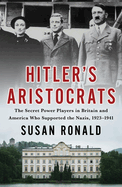
| Publisher: | St. Martin's Press | |
| Genre: | Biography & Autobiography, United States, Europe, Wars & Conflicts, Great Britain - 20th Century, Social History, 20th Century, History, World War II - General, Historical | |
| ISBN: | 9781250276551 | |
| Pub Date: | March 2023 | |
| Price: | $32.50 |
| History |
by Susan Ronald
"By the clever and continuous use of propaganda, a people can even be made to mistake heaven for hell, and vice versa." So said Adolf Hitler, whose phalanx of "elite appeasers" in Britain and America, according to historian Susan Ronald (The Ambassador; A Dangerous Woman) in Hitler's Aristocrats, ably assisted him in resurrecting a war-ready Germany. In the shadow of World War I, many of the Allied nations swore such slaughter should never happen again, but this "magnificent obsession" became a propaganda cudgel that Hitler and his Nazi Party wielded to great effect. Ronald magnifies the countless dupes--European high society, international industrialists and the British and American political elite--who aided Hitler's rise by acting (wittingly or not) as the dictator's "listening posts" and mouthpieces, constantly working to "burnish Hitler's halo as a 'man of peace.' "
Through memoirs, diaries, letters and postwar testimonies, Ronald reveals the uncomfortable pro-Nazi and often antisemitic attitudes of such controversial luminaries as the Duke and Duchess of Windsor, Diana and Unity Mitford, Lady Nancy Astor, Charles Lindbergh and many others who believed appeasing Hitler was the only way to avert another war. Edward, Duke of Windsor, comes in for particular disdain as a man who was "never a deep thinker" and who fervently (and misguidedly) believed a close relationship between England and Germany was "essential for the security of Europe." Hitler's Aristocrats is an absorbing study of the ubiquitous nature of propaganda and the "murky puppeteers" who actively worked to blind the world to Hitler's crimes. --Peggy Kurkowski, book reviewer and copywriter in Denver
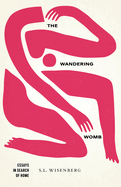
| Publisher: | University of Massachusetts Press | |
| Genre: | Biography & Autobiography, Form, Literary Collections, Humor, Essays, Jewish | |
| ISBN: | 9781625347350 | |
| Pub Date: | March 2023 | |
| Price: | $22.95 |
| Essays & Criticism |
by S.L. Wisenberg
S.L. Wisenberg's The Wandering Womb: Essays in Search of Home, winner of the Juniper Prize for Creative Nonfiction, is a debut collection worth noting. Wisenberg (Holocaust Girls) does not arrange the essays chronologically, a choice that mirrors the wandering of the title and leaves readers unmoored in time, feeling the pressure of both past and present in each essay. A particularly effective use of this unmooring is apparent in "The Year of the Knee Sock," which opens in 1967, when the author is 11 and taking a fashion class at Neiman Marcus. ("NM was like us, Jewish and Texan and established.") At times self-deprecating, the essay takes readers through various sixth-grade memories before recalling a classmate whom she can't fully remember but calls "Tom." When Tom follows her into the instrument closet, Wisenberg captures the innocent confusion of immaturity: "maybe this Tom has brought instructions, a diagram that shows one how to place the musical instruments in their proper places, a map you wouldn't expect to exist, like the one that comes inside boxes of chocolate candy." The rest of the essay spirals around this moment and its aftereffects, those felt immediately and those understood only after years of reflection: "In sixth grade I didn't know my body could speak" and "no one told me I was entitled to feel triumphant."
Wisenberg's direct tone and wide-ranging curiosity make this collection one to recommend, especially to those with an interest in the ways that history and memory intertwine. --Sara Beth West, freelance reviewer and librarian
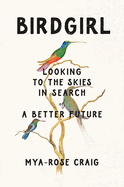
| Publisher: | Celadon | |
| Genre: | Nature, Biography & Autobiography, Women, Animals, Personal Memoirs, Health & Fitness, Birds, Environmentalists & Naturalists, Mental Health | |
| ISBN: | 9781250807670 | |
| Pub Date: | March 2023 | |
| Price: | $28 |
| Starred | Nature & Environment |
by Mya-Rose Craig
Environmentalist and bird enthusiast Mya-Rose Craig chronicles her life as a bird watcher--and how it shaped her into a social justice activist by young adulthood--in her moving memoir, Birdgirl: Looking to the Skies in Search of a Better Future. As the youngest daughter of a "well-known birding family" in Britain, Craig was exposed to birdwatching--also called "twitching" in the U.K.--from a young age.
Craig calls birding a "thread running through the pattern of my life," and she follows that thread across every page. The result is a memoir about birds and Craig's milestones as an ornithologist: completing a "Big Year" (an attempt to see 300+ species of birds in one year) at age nine with her parents; starting Birdgirl, the blog from which her memoir gets its title, at age 11; and, ultimately, at 17, becoming the youngest person to have seen half of the known bird species in the world. But Birdgirl is also about so much more than birds, just one of the fascinating threads in the memoir. "Becoming a political and environmental activist felt like a natural progression," she writes, an observation that becomes abundantly clear as Birdgirl unfolds and Craig begins to use her platform and voice to emphasize climate change, stories of Indigenous peoples and the challenges of racial equity in nature and conservation circles.
This memoir will inspire readers with an eye for nature--as well as those interested in climate change and conservation--to look to the skies and find inspiration for a better future in all of the majestic beauty that surrounds us. --Kerry McHugh, freelance writer
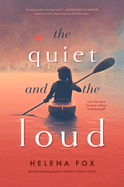
| Publisher: | Dial Books | |
| Genre: | Physical & Emotional Abuse (see also Social Themes - Sexual, Romance, Multicultural & Interracial, Social Themes, Young Adult Fiction, LGBTQ+ | |
| ISBN: | 9780593354582 | |
| Pub Date: | March 2023 | |
| Price: | $19.99 |
| Starred | Children's & Young Adult |
by Helena Fox
Helena Fox (How It Feels to Float) evocatively explores trauma, guilt and self-advocacy in this compelling and arresting novel.
The only time 18-year-old George experiences silence is in her kayak in the Sydney harbor. Her mum, stepmum and grandfather are always "clacking and pecking at each other," making her house "like a carnival ride." Her best friend, Tess, is about to become a teen mom and assumes George will help raise the baby. Bushfires are raging up north, edging closer to George's home, and her estranged alcoholic father keeps texting her with important news to share. There is one "ripple of something good in the mix and mess," however: Calliope, who makes George feel bright and hopeful. Despite the reprieve, though, George must help a struggling postpartum Tess while facing her past, filled with buried, traumatic memories that keep resurfacing.
Fox's The Quiet and the Loud takes place in Sydney, Australia, during the 2019 summer season when enormous wildfires swept through the continent. This devastating climate event perfectly parallels George's experience with complex PTSD. As the fires grow and travel closer to Sydney, George's flashbacks groan and stretch from flickers to full-on memories. She tries to push them away, but like the fires, they "rush towards each other, combine, incinerate, destroy." This vivid imagery is paired with evocative prose ("When I think about you... My bones feel picked clean") and lyric poems, through which George comes to understand that "you don’t have to look after everyone, or protect people who have hurt you." --Lana Barnes, freelance reviewer and proofreader
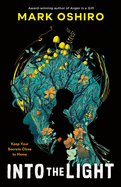
| Publisher: | Tor Teen | |
| Genre: | Survival Stories, General (see also headings under Social Themes), Crime, Romance, Family, Coming of Age, Thrillers & Suspense, Social Themes, Young Adult Fiction, Prejudice & Racism, Action & Adventure, LGBTQ+ | |
| ISBN: | 9781250812254 | |
| Pub Date: | March 2023 | |
| Price: | $19.99 |
| Starred | Children's & Young Adult |
by Mark Oshiro
In this riveting YA thriller from Mark Oshiro (Anger Is a Gift), a gay Latinx teen embarks on a dangerous trip to locate his sister, battle his demons and find a community in which he truly belongs.
Manny is a former foster child. With every new home, Manny was forced to choose between family membership and his personal identities. "I wanted both," he recalls, "I wanted freedom. I wanted love. I wanted choice. I wanted certainty." The 17-year-old has spent the past year hitchhiking with long-haul truckers (a few of whom were predatory) and staying in cheap motels. Then he met the Varela family. Now he is traveling with them, piecing together clues about his life before the foster system and looking for his sister, who he hopes is still alive.
Eli is a teen living in a secluded area and preparing to share the miracle of his "reconciliation" with other teens. All he retains from his life before being abandoned are "vague images and feelings," and now he simply wants to love and be loved in return. The teens are forced to uncover their own dark pasts when they hear news of a body found in the California Hills.
Oshiro intensifies the suspense by alternating first-person points of view between Manny's former life, his present-day narrative and Eli's experience, the shifts shown visually through font changes. The author's intentionally unreliable timeline and frequent traumatic memories highlight Manny's feelings of powerlessness. Into the Light is a carefully wrought and heartrending novel that delves into themes such as claiming identity, healing and emotional freedom. --Kieran Slattery, freelance reviewer, teacher, co-creator of Gender Inclusive Classrooms
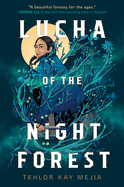
| Publisher: | Make Me a World | |
| Genre: | Dystopian, Fantasy, General, Young Adult Fiction, Diversity & Multicultural | |
| ISBN: | 9780593378366 | |
| Pub Date: | March 2023 | |
| Price: | $18.99 |
| Starred | Children's & Young Adult |
by Tehlor Kay Mejia
Lucha of the Night Forest by Tehlor Kay Mejia (We Set the Dark on Fire) is an immersive and lush fantasy featuring a compelling battle between a magic-wielding teen and those who would use their power to oppress her.
Sixteen-year-old Lucha Moya and her 13-year-old sister, Lis, are imprisoned after their drug-addicted mother abandons them. Their captors, Los Ricos, are the kings of the drug Olvida that stole their mother. When Lucha falls into desperation, the malevolent being El Sediento offers her a bargain: he will awaken her ability to wield the forest's power and Lucha will help him destroy Olvida, something she wants anyway. The sisters escape, and Lucha leads them to a place critical to El Sediento's mission. They are helped on the days'-long trip by Paz, a devotee of Almudena, the forest goddess. Although a romance flares between Lucha and Paz, Lucha withholds the truth about her nightmarish ally from Paz. She wonders about Paz's motives but focuses on navigating the forest and preparing for what the spirit might demand next.
The author's skillful plot also introduces a sanctuary for those deeply devoted to Almudena, as well as the soft but warming buzz of a slowly developing queer romance. This Latin American-rooted tale is an exquisite examination of power structures as Lucha battles inequality ("If you wanted air, you had to pay for it") and unhealthy family dynamics ("The only thing heavier than a parent's presence is their absence"). The interplay between evil, powerlessness and hope is also interrogated as Lucha rejects the idea that the world as it is shackles her to a single destiny. --Samantha Zaboski, freelance editor and reviewer
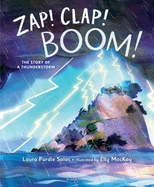
| Publisher: | Bloomsbury Children's Books | |
| Genre: | General, Science & Nature, Poetry, Earth Sciences - Weather, Juvenile Nonfiction | |
| ISBN: | 9781547602254 | |
| Pub Date: | February 2023 | |
| Price: | $18.99 |
| Children's & Young Adult |
by Laura Purdie Salas, illust. by Elly MacKay
Bam! Science collides with poetry in Zap! Clap! Boom!: The Story of a Thunderstorm, in which Laura Purdie Salas's pit-a-pat rhymes match the tempo of a rain shower, and Elly MacKay's art rivals the drama of a real atmospheric disturbance.
At first, three kids haven't a care as they kick a ball down a hill: "Sunny day sits warm and dry./ No wind,/ no rain,/ no stormy sky." (Sharp-eyed readers will note a distinct haziness at the kids' backs.) The rhymes proceed, and the trio play until they notice the clouds: "Starting low,/ they grow/ and grow--/ white above,/ now gray below." Before long it's "ZAP! CLAP! BOOM!" The kids make a run for it, but too late! "Swollen clouds begin to drain,/ spilling/ splashing,/ chilling/ rain." They head for shelter--but not before stomping a puddle or two.
As the weather intensifies, so do the book's language and art. Salas (Snowman - Cold = Puddle: Spring Equations) imbues the stormy scene with a Halloweeny menace: "Wind blows fiercely,/ howls/ and shrieks./ The world/ groans slowly,/ shivers,/ creaks"; MacKay (In the Clouds) uses bruise-like purples and blues to capture nature at its fiercest. MacKay, working in layered paper (with rain and lightning courtesy of Procreate), builds texturally enticing tableaux--some wordless, some animal-decked--that readers will want to reach out and touch... except, perhaps, when the storm is meanest. Then readers may wish they could be with the three kids enjoying the tempest from the safety of home. --Nell Beram, freelance writer and YA author
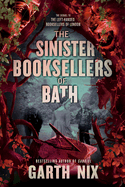
| Publisher: | HarperTeen | |
| Genre: | Epic, Fantasy, Mysteries & Detective Stories, Young Adult Fiction, Action & Adventure | |
| ISBN: | 9780063236332 | |
| Pub Date: | March 2023 | |
| Price: | $19.99 |
| Children's & Young Adult |
by Garth Nix
The Left-Handed Booksellers of London are back in this fine and fantastical sequel by Garth Nix, in which supernatural Susan Arkshaw must face her growing powers--as well as a malevolent mythical entity--when what she really wants is simply to be human.
Booksellers at the Small Bookshop work to rein in magical engagement and sort through secondhand books looking for hidden artifacts from the enchanted Old World. When the booksellers find a map fragment "saturated with sorcery" that depicts a statue-filled garden, fair-haired and left-handed Merlin is brought in to investigate. The map traps Merlin in the garden, which has, through powerful magic, "been taken out of our world." Susan, daughter of a powerful Ancient Sovereign, creates a "translocation map" to follow him. There, Susan finds the corpses of 26 murder victims as well as the sleeping form of one who, like Susan, is a rare "child of a mortal and an Ancient Sovereign" (a "mythic-mortal"). Animated marble statues and rogue Freemasons complicate attempts by Susan and the booksellers to locate the mythic-mortal's "hostile" mother before there are any more deaths--including the potential sacrifice of Susan to a centuries-old murderous being.
Nix's alternate 1980s London sets the scene for action-packed mythological mayhem, as magic and large-scale firepower are employed to aid the booksellers' containment of the Old Ones. Susan faces pressure from Ancient Sovereigns and strong-willed booksellers but makes her own decisions regarding whether she'll fully embrace her destiny (and her relationship with boyfriend Merlin) or fulfill her desire to live a normal life. The execution's the thing in this delightfully whimsical novel where tongue-in-cheek humor prevails. --Lynn Becker, reviewer, blogger, and children's book author